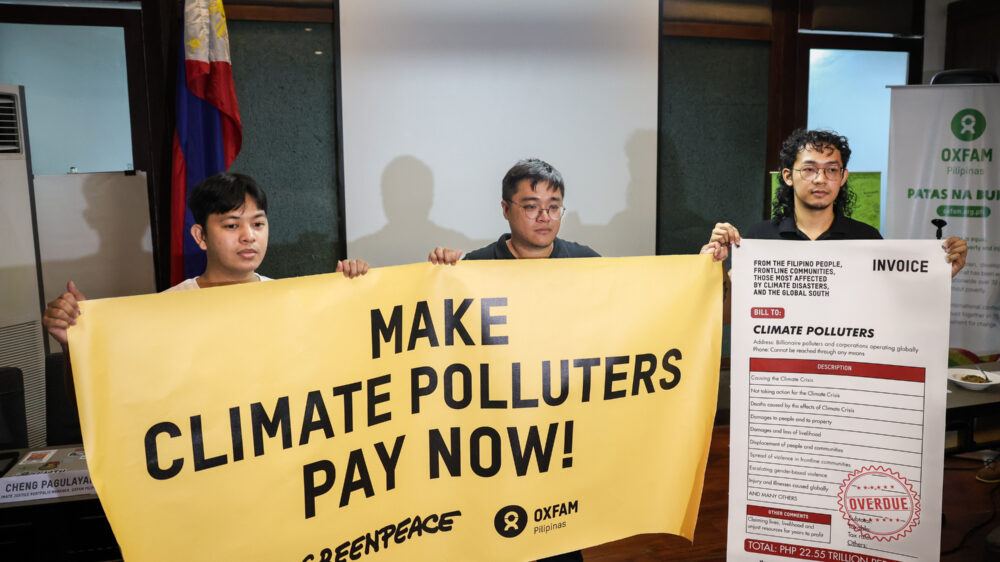This article was originally written by Romar Miranda for Panay News last February 17, 2022 as part of Oxfam Pilipinas’ Journalism Grant on Inequality: https://palawan-news.com/special-report-climate-change-cripples-palawan-seaweed-farms/
Another version of this article was published by Inquirer: https://newsinfo.inquirer.net/1555190/in-palawan-seaweed-farmers-cry-for-help
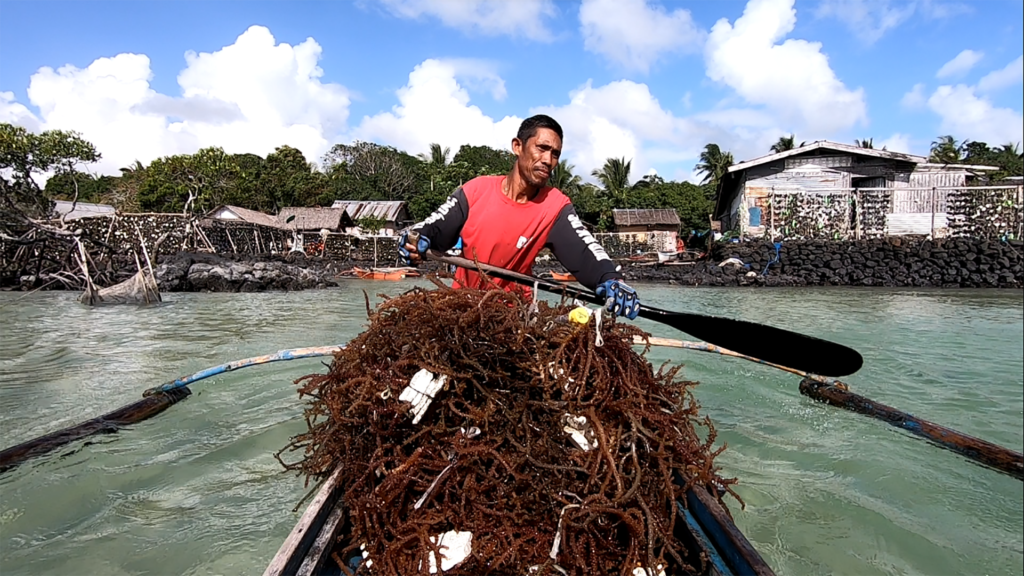
Many seaweed facilities were destroyed when Typhoon Rai (locally known as Odette) wreaked havoc in central and northern Palawan in mid-December last year, crippling the income of Filipino coastal farmers who relied on this as their primary source of livelihood.
Jhay-R Timbang, chairman of the Star of the North Agriculture Cooperative in the coastal village of Pularaquen in the northern Palawan town of Taytay, was among the thousands of individuals who are still struggling to recuperate from the effects of the recent typhoon.
“Typhoon Odette destroyed our seaweed farms. Until today, we are still trying to recover―salvaging what’s left because we do not have source of seedlings to start our production again. At the same time, our huts and ropes were all lost. (’Yong Typhoon Odette ‘yong umubos ng seaweed namin. Hanggang ngayon, nagre-recover pa rin kami. Kung ano ‘yong natira sa mga seaweeds namin na puwede pang itanim para mapagkukunan ng binhi, ‘yon pa ‘yong aming ginagawa, pero sa ngayon, wala pa kaming mapaghahanapan ng binhi. At the same time, ‘yong mga kubo namin at mga lubid ay walang-wala talaga),” Timbang said.
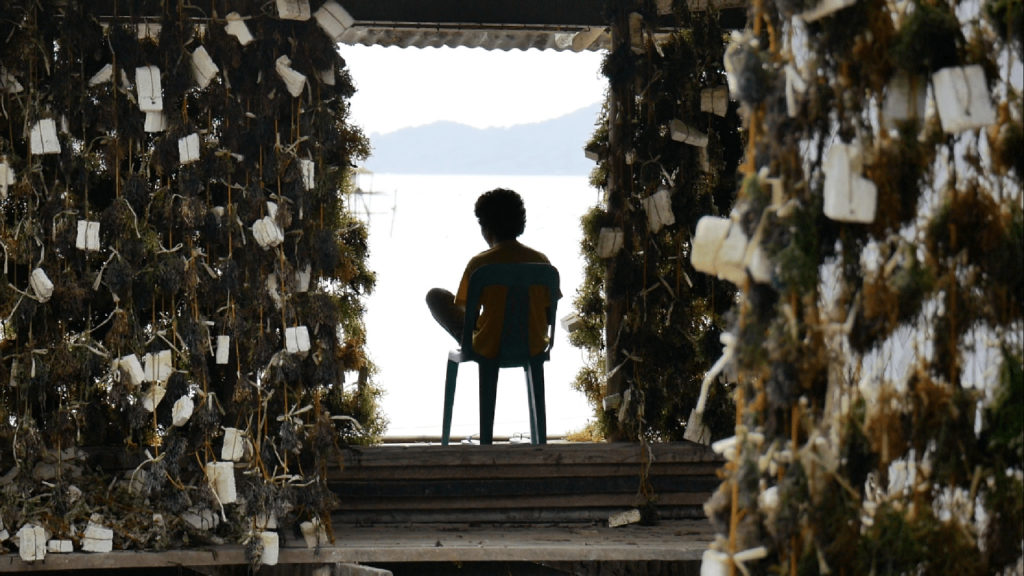
Agricultural impact of intensified storm surge and coastal flooding
The most recent onslaught of Typhoon Odette caused unprecedented agricultural damage to almost P3 billion pesos throughout the Palawan province, affecting 5,532 seaweed farmers who lost their livelihood.
Until the last decade, flooding in coastal villages had been virtually non-existent in the island province, which environmentalists identified as an escalating issue fueled by climate change.
In its November 2021 report, the United Nations’ World Meteorological Organization (WMO) said that climate change has intensified hazards in the southwest Pacific region, with storms and floods causing death, destruction, and displacement in Southeast Asia and Pacific Small Island Developing States (SIDS).
Palawan, home to about 939,594 people and the largest province in the country in terms of land area, ranks second as the province most vulnerable to hydrometeorological risks of climate change, according to Greenpeace Philippines.
Based on the Department of Agriculture-Bureau of Agricultural Statistics (DA-BAS), since 2008, Palawan was the top producer of seaweed in the country with 444,355.44 metric tonnes, comprising around 27 percent of the national production.
Timbang, along with thousands of coastal farmers throughout the province whose seaweed farms had been decimated, received P2,000 as aid from the provincial government.
“We received P1,000 earlier today (February 14). This is already the second batch from the local government. The first was food assistance, also worth P1,000. (May natanggap kaming ayuda kaninang umaga. P1,000 galing sa LGU. Bale second batch na po ito. Ang una ay para sa food assistance worth P1,000 din),” Timbang said.
However, the farmers remained primarily concerned about rehabilitating their seaweed farms, lacking available seedlings (propagules/cuttings) locally.
Rodrigo Longcayana, leader of seaweed farmers in Sitio Amogues in the coastal village of Calawag in Taytay town, also cries for help with almost P2 million losses in seaweed facilities and agri-fisheries machinery.
“We wanted to know how to get help because if this continues, we will be helpless for years to come. We are asking help from everyone who can and willing to help us. (Gusto namin malaman kung ano ‘yong mga paraan para matulungan kami kasi kung magpatuloy ito kawawa kami baka mag hirap kami ng ilang taon. Kaya nanawagan kami na baka mayroong pwedeng makatulong sa amin),” Rodrigo said.
Along with other seaweed farmers in their local cooperative, Timbang was forced to find other alternative sources of income to provide for the needs of their families.
“For now, we are raising native chickens. We are still waiting for seaweed seedlings because we can’t find any suppliers here in Palawan. If there is no typhoon, we just make do with what we have to survive. (Sa ngayon, nag-aalaga muna kami ng native chicken. Mayroon din kaming binhi ng seaweeds pero hindi pa rin nakuha dahil sa bagyong Odette, naubos din. Naghihintay pa kami ng may makunan ng binhi. Pahirapan kasi makakuha ng binhi ngayon para sa seaweeds. Dito lang din kami sa Palawan kumukuha ng binhi. Kung walang bagyo, talagang para-paraan lang na may maka-survive na seaweeds para maging binhi),” Timbang added.
Provincial agriculturist Dr. Romeo Cabungcal said that Typhoon Odette severely affected the agriculture sector, particularly its high-value crops and agri-fisheries.
“We are still thinking ways how to provision seaweed seedlings, but the problem is we no longer have a source of seedlings. We will be sourcing out from other provinces. (Iniisip namin dito ang provision ng mga seaweed seedlings but the problem is wala na tayong source sa province na pinagkukunan ng seedlings. We will be sourcing out from other provinces),” Dr. Cabungcal said.
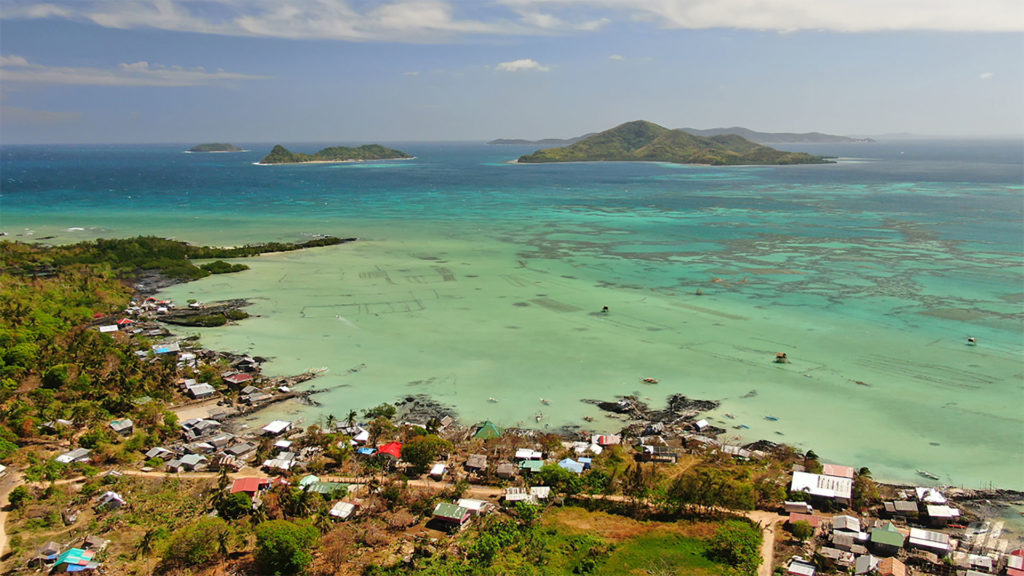
Rising sea temperatures threaten seaweed farming
The UN-WMO report also noted ocean warming, which contributes to about 40 percent of the sea-level rise that alters ocean currents, and, indirectly, storm tracks, as well as increasing ocean stratification, acidification, and deoxygenation.
“Ocean warming can also lead to dramatic changes in marine ecosystems and biodiversity,” the report read.
Since January 2021, local seaweed farmers have been noticing the increase in seawater temperature that is affecting the survival, growth, and reproduction of their produce.
Timbang said that it was their first time to encounter ice-ice, a disease caused by epiphytes triggered by high seawater temperature, leading the seaweeds to die.
“Dahil sa pagbabago ng temperatura ng dagat, biglang nalusaw ‘yong mga seaweeds. Halos natunaw lahat ng seaweeds namin noon at hindi ‘yong ordinaryong pagkalusaw, natutunaw tapos pagdating sa area lubid na lang ‘yong natira. Ganoon kabilis ‘yong pagkasira ng seaweeds,” Jhay-R said.
Seaweed is a robust cash crop that the locals usually refer to as a “floating bank account”. They have a means of income as long as they can harvest seaweed. One line can be turned into 10 lines in just six months, giving the farmers a choice of expanding their seaweed farm quickly, selling for cash, or trading for goods.
Seaweed farming in the province is dominated by small farmers, with an average farm size of 0.25 hectares (ha), generating employment for around 85 to 90 percent or more than 17,459 coastal families, elevating the socio-economic status of coastal communities.
Ordinary seaweed price ranges between P12.50 to P13 per kilogram for low-class seaweeds species including “butay”, “espinoso”, and “milyon-milyon”. The giant brown-orange, locally known as “sakul”, is the most prized seaweed ranging between P42 to 50 per kilogram. During the peak season between April to May, prices would even reach up to P80 and P100 per kilogram, with each seaweed roll generating up to P6,000 per farmer.
“Sa hina-harvest ko, dati nakaka -10 rolyo ako ng agar-agar para ibenta, pero noong nagsimula ‘yong ganitong sitwasyon, nakaka-apat o limang rolyo na lang ako, halos kalahati ang nalulusaw,” Timbang added.
Taytay Municipal agriculturist Hernan Fenix said sea-level rise and climate change are affecting all seaweed farms in Taytay Bay, causing them to soften and melt. He said they started receiving reports about destruction from seaweed organizations in December 2020.
“Ang sea level temperature rise ay short natural phenomenon—nagkakaroon ng natural changes, katulad ng pagbabago ang klima sa ilalim ng dagat kaya nag-ooccur ang ganitong problema sa Taytay Bay,” Fenix said.
Among the seaweed farms that were affected are located in the areas of Amogues, Calawag, Tabuyo, Pamantolon, and Pularaquen.
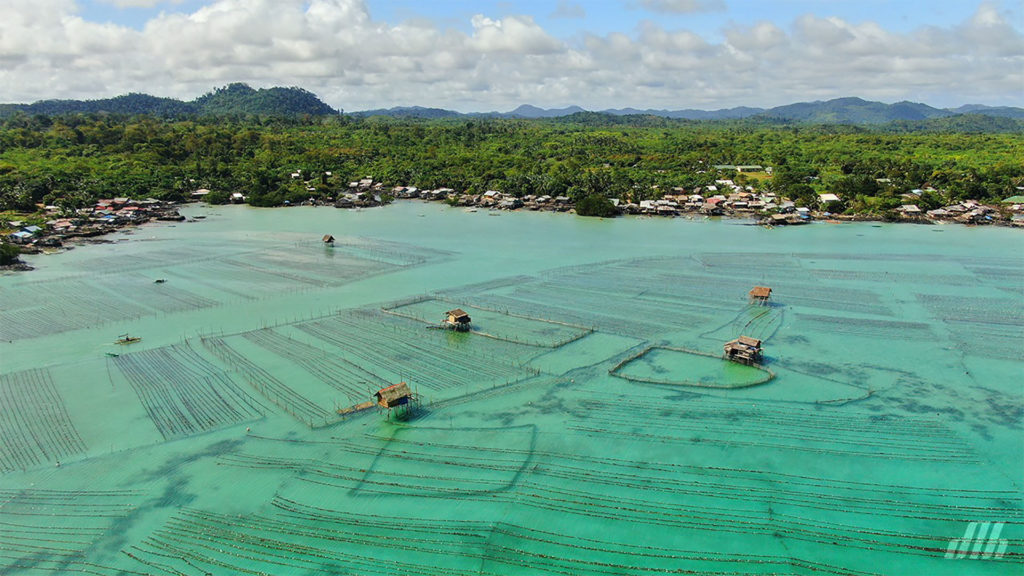
Climate action plan
According to a study by Oxfam International released in January 2021, the richest of the rich are polluting the planet and driving climate change, while the poorest of the poor bear the brunt of its effects.
The report noted that the richest 1 percent of the world population has used two times as much carbon as the poorest 50 percent in the last 25 years, urging the government to implement policies that reduce overall energy demand while accelerating the use of renewable energy.
Dr. Romeo Cabungcal, chief of the Provincial Agriculture Office, said that changes in the agriculture and fisheries landscape, particularly the challenges posed by climate change to the sector, are being introduced to boost rural market development, which would eventually help reduce poverty in Palawan’s coastal districts.
Eduardo Gongona, director of the Bureau of Fisheries and Aquatic Resources, said they are currently implementing the Seaweed Development Program (SDP) to look into the priority concerns, issues, and problems of the seaweed industry.
The program anchors its ultimate target with the DA-BFAR’s goals of reducing poverty incidence in the coastal areas, contributing to national food security, enhancing people’s empowerment in the fisheries sector, and utilizing seaweed as one of the primary aquaculture commodities in the country.
Under the National Seaweed Development Program, the DA-BFAR maintains and establishes BFAR seaweed culture laboratories and nurseries to produce quality seaweed seedlings; distributes seaweed seedlings and farm implements; provides seaweed solar dryer to improve the quality of raw dried seaweeds (RDS); conducts training and technology demonstrations on value-adding and farming technologies for the production of emerging seaweed species, and organizes seaweed farmer-to-market cooperatives to improve the economic conditions of the seaweed farmers.
According to the province’s Local Climate Change Action Plan, most of the rural poor are highly dependent on agriculture and natural resources for their livelihood and are among the most vulnerable to climate change. The province’s vulnerability to natural hazards was closely linked to poverty and environmental degradation, with the global climate change risks expected to further exacerbate the poor’s vulnerability to natural hazards.
Oxfam also recommended that governments impose scaled carbon taxes on luxury-related consumption that contributes to carbon emissions. The international organization also noted that carbon taxes should be used to help poorer areas in need of social assistance as well as those who are particularly vulnerable to severe natural disasters.
“Workers, women, and marginalized communities should be at the heart of decision-making processes at all levels — ensuring that their voices are heard as governments plan the transition to an economy that allows everyone to realize their human rights, within the limits our planet can bear,” the report says.
Presently, a P25 million budget was proposed to aid the farmers and fishermen affected by Typhoon Odette, with a total of 320 sets of seaweed seedlings delivered and distributed to seaweed farmers in the coastal villages of Green Island and Tumarbong in Roxas town, and in the villages of Sibaring and Bancalaan in Balabac town during the distribution of seaweed farm inputs taken from the remaining materials of the P9.6M project from the BFAR.
“Natural hazards contribute to further degradation and poverty, thus, creating a vicious cycle of poverty, environmental degradation, and vulnerability to natural disasters. In fact, the coastal and marine sectors of Palawan are generally vulnerable to climate-related hazards of sea-level rise and sea surface temperature, and hence, there is a need to seriously look into ways by which this level of vulnerability can be reduced,” the LCCAP read.
